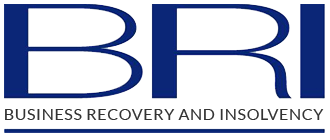Members’ Voluntary Liquidation
What is a Members’ Voluntary Liquidation?
Members Voluntary Liquidation (MVL) is a formal process of closing a solvent company.
If you are considering a members’ voluntary liquidation for your company, we would recommend seeking advice from your tax advisers and BRI Business Recovery and Insolvency. Contact BRI Business Recovery and Insolvency for a free, no obligation discussion about your specific circumstances.
Why is a Members Voluntary Liquidation Implemented?
Once a successful company has come to the end of its useful life and wishes to cease trading a Members Voluntary Liquidation is a common formal process used to close the business.
This process often provides the most tax efficient way for shareholders to receive the surplus of cash and/or assets remaining in the business (after all liabilities have been paid).
The reason an MVL is often the most tax efficient process for shareholders of solvent companies is due to them being entitled to receive Business Asset Disposal Relief (formerly known as Entrepreneur’s Relief). Business Asset Disposal Relief provides a far more generous taxable rate than standard dividends made in the ordinary course of business.
Who Benefits from a Members’ Voluntary Liquidation?
Directors or shareholders who are approaching retirement would generally benefit from an MVL – this is what we ordinarily see. These directors and shareholders are looking to extract their long-term successful investment from their company. This could be cash that has built up over time or a sale of the trade and goodwill that has resulted in an amount of cash remaining in the company. There are several other reasons for a Members Voluntary Liquidation, but these are the ones that come up often.
The Members’ Voluntary Liquidation Process
When a client embarks on the MVL journey, they often want to know what they can expect from the process.
In brief, once a company is in a position to enter Members Voluntary Liquidation, the following steps will take place:
- Confirmation of Solvency: The directors will confirm that the company is solvent (assets outweigh the liabilities) via a Declaration of Solvency. This is sworn in the presence of a solicitor and filed at Companies House. When you choose to work with BRI, we will arrange all the relevant paperwork for this.
- Board Meeting and General Meeting: It is then the directors and shareholders, at a board meeting followed by a general meeting, that place the company into Members Voluntary Liquidation. This is done through the passing of a resolution and appoint licensed insolvency practitioners as liquidators. Again, when you partner with BRI, we arrange all the relevant paperwork and necessary meetings on your behalf.
- Distribution of Assets: The liquidators will then be able to distribute the cash and/or assets once they are appointed.
- Removal from Companies House: When the Members’ Voluntary Liquidation finishes and we are released as liquidators, the company will then be dissolved at Companies House.
When is Best for My Company to Enter Members Voluntary Liquidation?
As with all the work we do at BRI Business Recovery and Insolvency, the earlier you seek advice, the better. It is never too early.
The most valuable part of the work involved in a Members Voluntary Liquidation comes in the planning and preparation. We help you to make sure the company, directors and shareholders are all completely ready to enter Members Voluntary Liquidation.
We work with you every step of the way and, provide all the relevant paperwork and arrange for the solicitors (if you do not have one of your own choosing) in readiness for the swearing of the Declaration of Solvency and all other requirements as and when necessary.
Contact us if you would like further information and assistance regarding any aspect of a Members Voluntary Liquidation for your company. There is no charge for doing so, and it is done without obligation.
